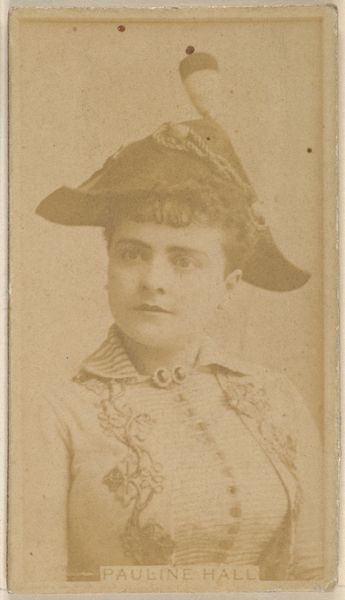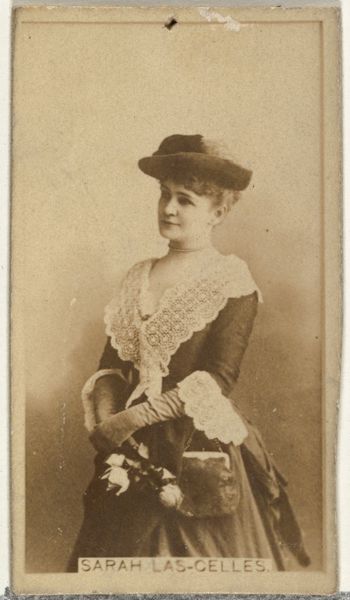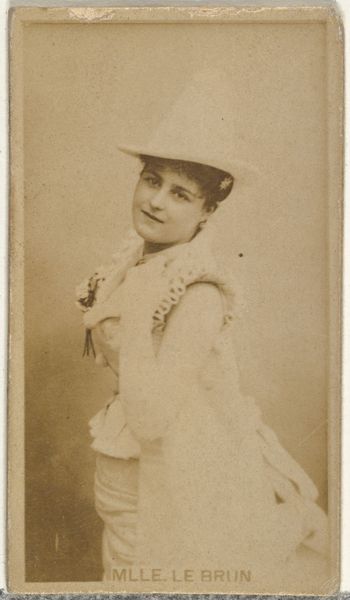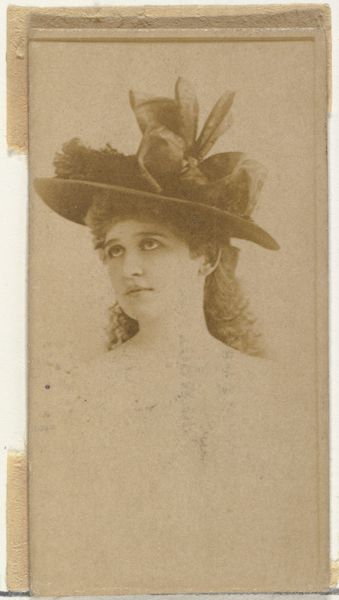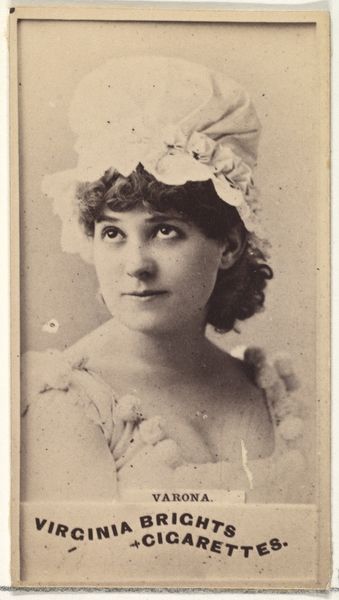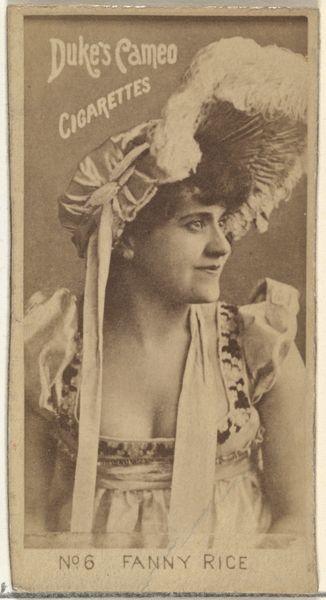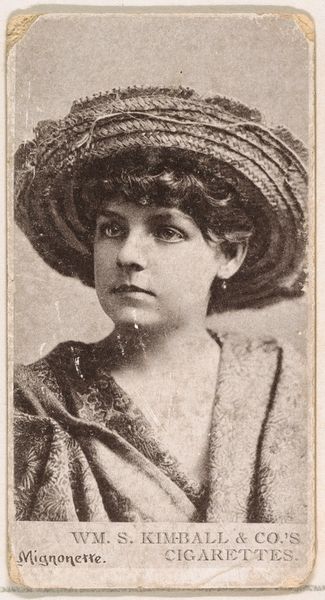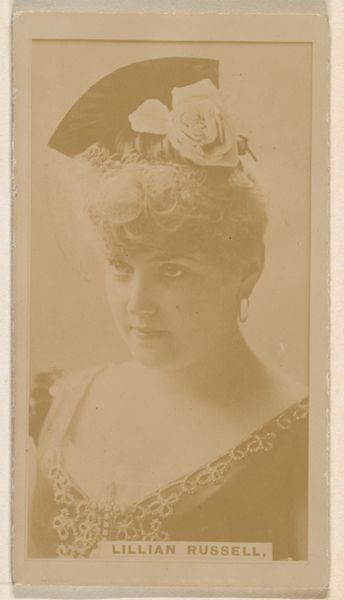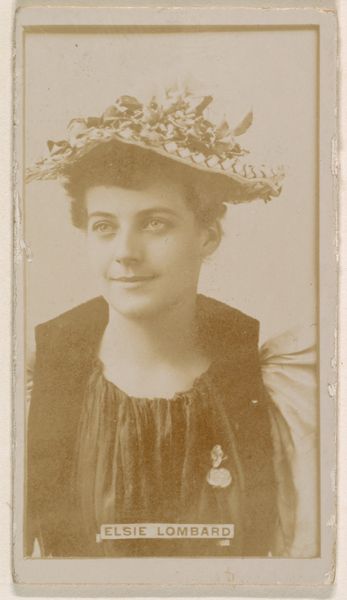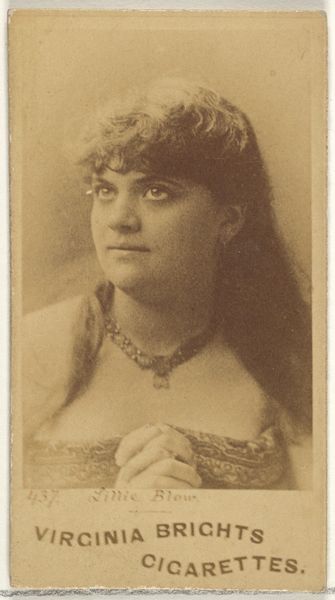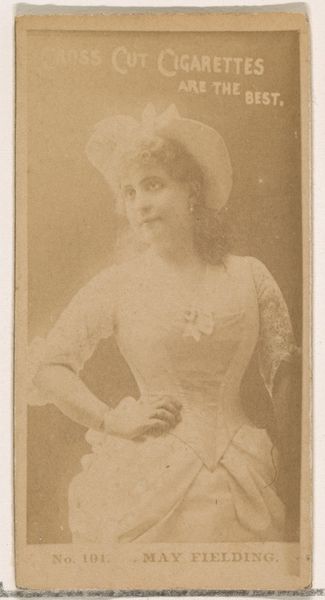![[Actress wearing dress with ornate lace collar], from the Actors and Actresses series (N145-8) issued by Duke Sons & Co. to promote Duke Cigarettes by W. Duke, Sons & Co.](/_next/image?url=https%3A%2F%2Fd2w8kbdekdi1gv.cloudfront.net%2FeyJidWNrZXQiOiAiYXJ0ZXJhLWltYWdlcy1idWNrZXQiLCAia2V5IjogImFydHdvcmtzL2MyYTFkOWU2LWE0ZGQtNDgzZS04MGU5LTU3ODg2Yjk5ZGI2OS9jMmExZDllNi1hNGRkLTQ4M2UtODBlOS01Nzg4NmI5OWRiNjlfZnVsbC5qcGciLCAiZWRpdHMiOiB7InJlc2l6ZSI6IHsid2lkdGgiOiAxOTIwLCAiaGVpZ2h0IjogMTkyMCwgImZpdCI6ICJpbnNpZGUifX19&w=3840&q=75)
[Actress wearing dress with ornate lace collar], from the Actors and Actresses series (N145-8) issued by Duke Sons & Co. to promote Duke Cigarettes 1890 - 1895
0:00
0:00
print, photography, albumen-print
#
portrait
# print
#
photography
#
albumen-print
#
realism
Dimensions: Sheet: 2 11/16 × 1 3/8 in. (6.8 × 3.5 cm)
Copyright: Public Domain
Curator: This is a captivating albumen print from between 1890 and 1895. It’s one of a series of portraits of actors and actresses created by W. Duke, Sons & Co. to promote Duke Cigarettes. It resides at the Metropolitan Museum of Art. Editor: There's a real stillness to this portrait. The warm, sepia tones give it a soft, dreamlike quality. Her gaze is so direct, yet distant, like she's peering into the future… or maybe remembering the past? It's melancholic, for sure, a pensive mood. Curator: Exactly! Duke's company harnessed the burgeoning mass media to market cigarettes, linking their product with glamour and celebrity. This specific portrait showcases an unnamed actress adorned with a lace collar and a fashionable hat. Editor: Thinking about gender, it’s fascinating how images like this helped solidify societal expectations of feminine beauty. The actress's clothing, her poised demeanor, even the soft lighting – it all constructs an image of refined womanhood intended to be admired and emulated by Duke Cigarette’s consumers. Curator: Yes, there’s certainly an element of manufactured aspiration. But there’s something beautiful in her posture that appears completely unposed, as well, isn’t there? Almost defiant? A certain intelligence radiates. Maybe that’s wishful thinking. Editor: Perhaps a bit! But it underscores how these images operated. On one hand, the woman becomes an object of desire, fueling the cigarette company’s commercial ambition. On the other hand, in becoming visible to the masses, images such as these provide the subject with the chance for personal expression. It's this collision of intentions that remains really compelling and complex. Curator: Right! Thinking about the artist or company here, there are those underlying economic structures, too, supporting an early form of commercial photography. How did actors and actresses perceive that contract—visibility in return for commercial gain? Fascinating! Editor: I concur! Analyzing these kinds of pieces prompts a deep conversation regarding capitalism, representation, and even the elusive notion of “celebrity” that is relevant today. The subject herself and, honestly, her hat too are the real stars here. Curator: In the end, it invites you to linger and contemplate what an image of somebody once was, as it slowly morphs through various forms of perception over time. What survives, if that is even the right question? Editor: Indeed. And maybe more vitally, who it survives for, as its own narrative.
Comments
No comments
Be the first to comment and join the conversation on the ultimate creative platform.
